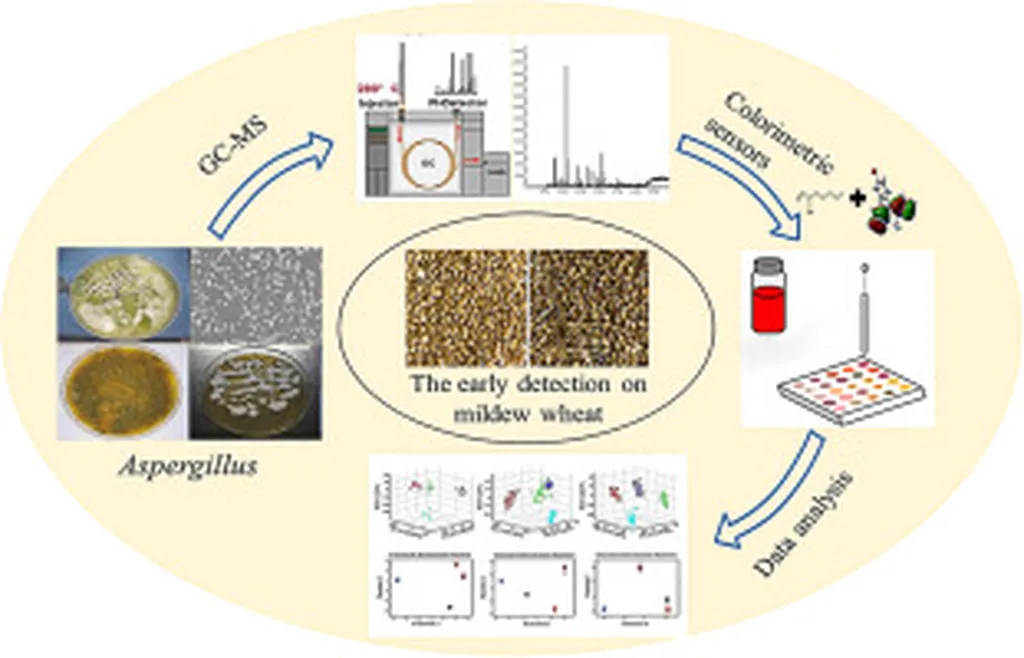In the realm of agricultural technology and emission monitoring, a significant breakthrough has emerged from the labs of Yangzhou University in China. Researchers, led by Kewei Liu from the College of Mechanical Engineering, have developed a novel sensor that could revolutionize the detection of long-chain volatile organic compounds (VOCs), particularly tetradecane. This compound, a long-chain alkane, has recently been identified as a crucial marker for early-stage mildew detection in stored grains. The study, published in the esteemed journal *Advanced Science* (translated as “Advanced Science”), presents a promising solution to a longstanding challenge in the field.
The team’s innovation lies in the synthesis of a microflower-like Fe@WO3/ZnCo2O4 heterostructure. This intricate design forms n-p junctions, which exhibit significant changes in electrical conductivity when exposed to tetradecane at room temperature. The sensor’s impressive capabilities include a detection limit of 78.4 parts per billion (ppb) and a rapid recovery time of just 36 seconds. These attributes make it a highly effective tool for monitoring and detecting mildew in agricultural settings, a critical need for the energy sector where stored grains are a vital commodity.
Kewei Liu explained the significance of their findings, stating, “The synergistic interactions among multiple heterojunction interfaces, doping-induced active sites, and the presence of oxygen vacancies contribute to the sensor’s remarkable performance. This breakthrough addresses a critical gap in metal oxide semiconductor sensors for detecting large-molecule gases.”
The implications of this research extend beyond agriculture. The ability to detect long-chain VOCs with such precision opens new avenues for emission monitoring in various industries. For instance, in the energy sector, where the integrity of stored grains is paramount, this sensor could prevent significant losses due to mildew. Early detection allows for timely intervention, ensuring the quality and safety of stored grains, which are essential for biofuel production and other energy-related applications.
Moreover, the sensor’s design principles could inspire further innovations in the field of chemiresistive sensors. The use of heteroatom doping and the creation of n-p heterojunctions represent a novel approach to enhancing sensor sensitivity and selectivity. As Kewei Liu noted, “This work identifies a promising candidate for the detection of distinct volatile organic compounds, warranting further exploration in agricultural and emission monitoring applications.”
The study’s findings, published in *Advanced Science*, highlight the potential for this technology to shape future developments in sensor design and application. By addressing the challenges associated with detecting large-molecule gases, this research paves the way for more efficient and effective monitoring systems. As the world continues to grapple with the impacts of climate change and the need for sustainable energy solutions, such advancements are crucial.
In summary, the work of Kewei Liu and his team at Yangzhou University represents a significant step forward in the field of sensor technology. Their innovative approach to detecting long-chain VOCs offers a glimpse into a future where early detection and monitoring can mitigate losses and improve efficiency across various industries. As the research community continues to explore the potential of this technology, the energy sector stands to benefit greatly from these advancements.

